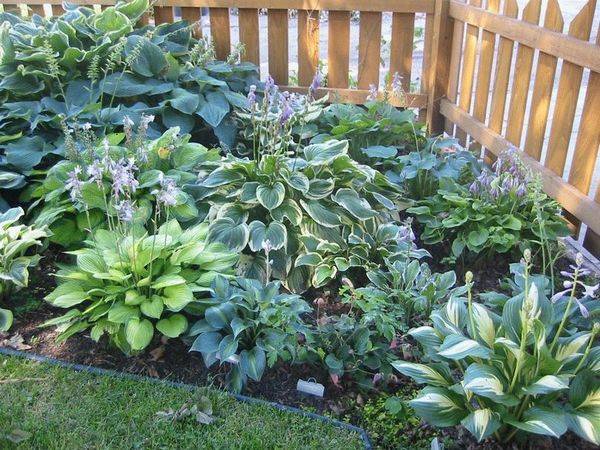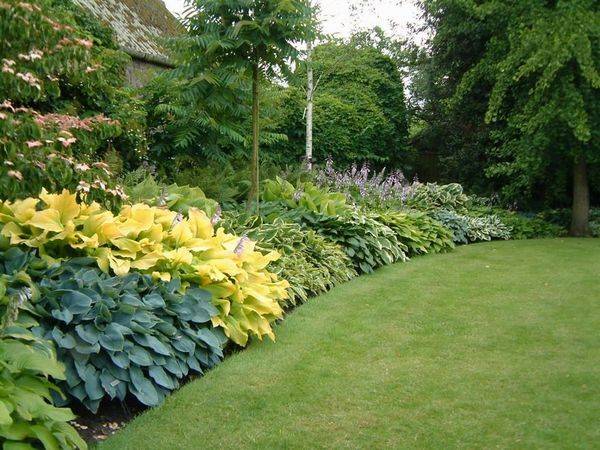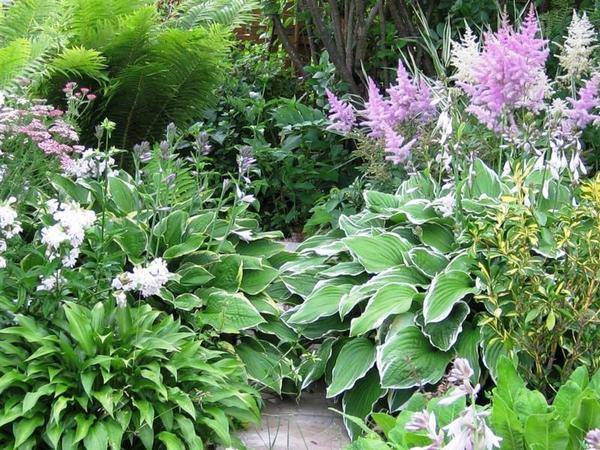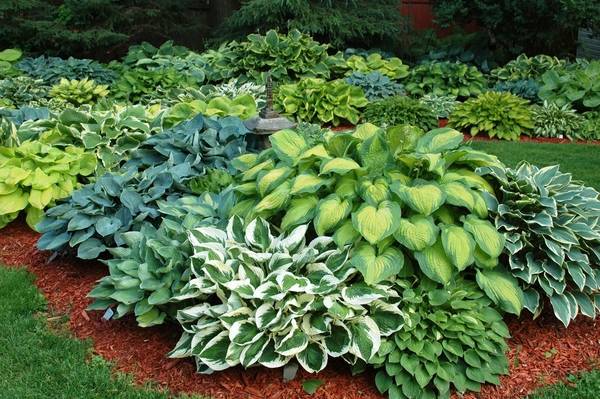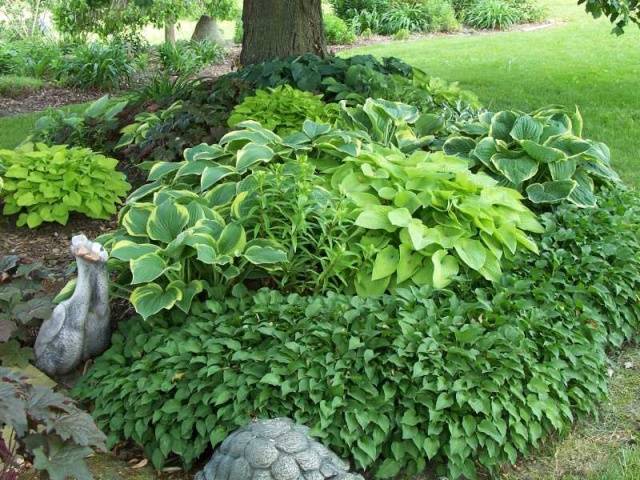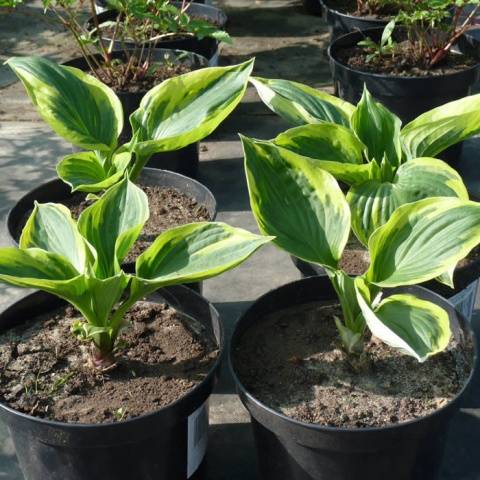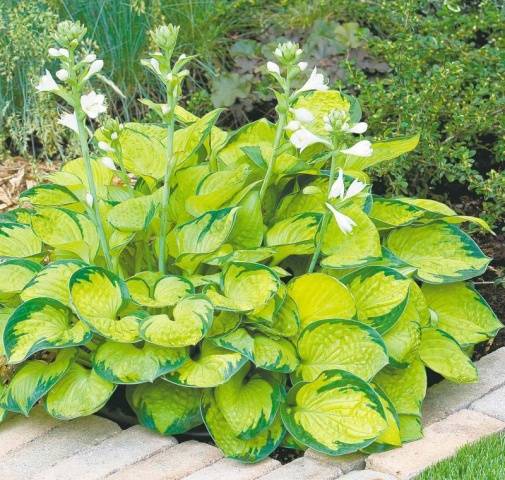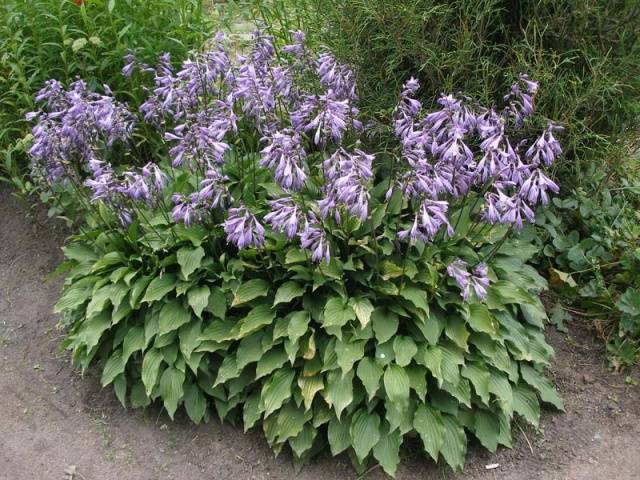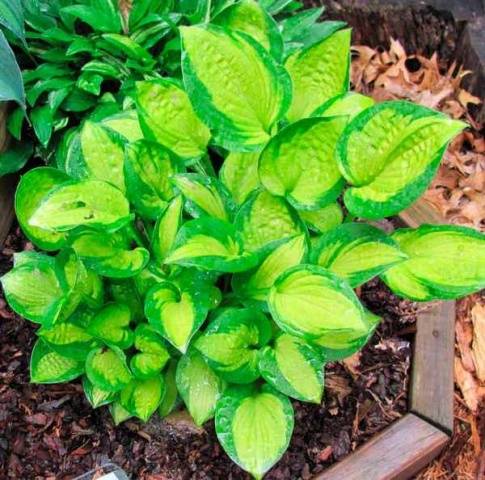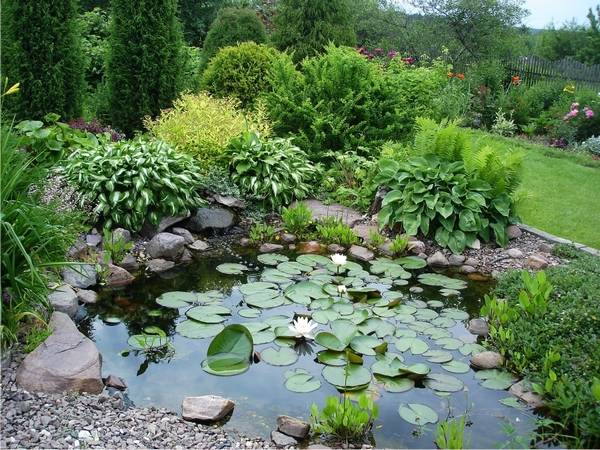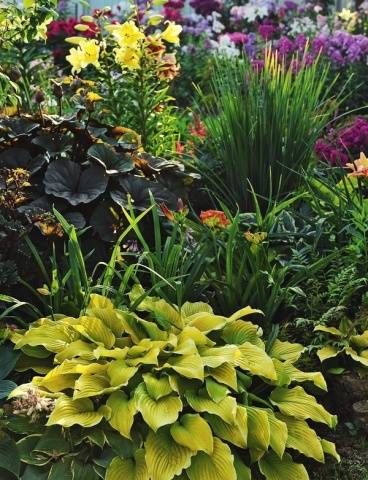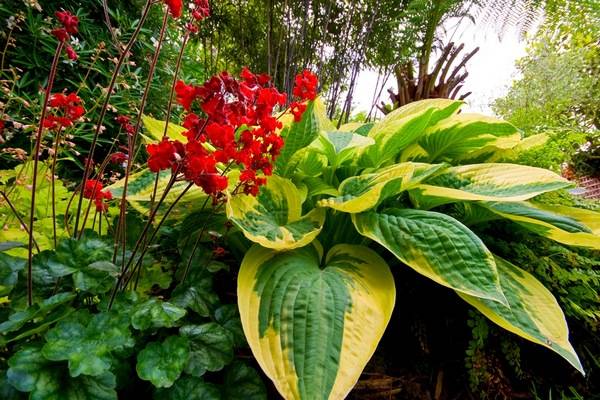Content
Plants with massive green leaves are often found in gardens and parks, they frame flower beds, are planted along fences, and decorate rock gardens and rockeries.
These are hosts - plants from the asparagus family with large leaves and short stems. Hosts in landscape design are used more and more often, because a green bush is an excellent background for any flowers and plants.
Are hosts always appropriate in the garden, how to grow them and what to combine with - this is what this article is about.
Host varieties
In appearance, the bushes resemble a plantain - they have the same massive leaves with large veins. The roots of the plant are strong, compact, the hosta perfectly tolerates transplants. In addition, culture also has several advantages:
- unpretentiousness - the plant does not require special care;
- the ability to land on any soil - hosts grow both on clay soils and on sandstone or black soil;
- compatibility with any kind of flowers, shrubs and trees;
- the ability to land on any site: whether it is the sunny side of the garden or a shady corner;
- variety of types and shades;
- the possibility of long-term cultivation;
- good growth rate - in 2-3 years the bush occupies an area of about one square meter;
- frost resistance - in the southern and central regions of the country, hosts do not need to be covered, they tolerate low temperatures well.
Today there are about four thousand hybrid varieties, each of which has its own distinctive features. From this variety, it is quite difficult to choose the most suitable plant.
However, all varieties can be divide into just a few groups, according to external distinctive features:
- Hosta curly - a very remarkable crop with dark green leaves that have a beige or white border around the edges. The leaves are very large, the bush itself reaches 0.6 m in height.
- Wavy hoston the contrary, it is white inside, and green at the edges of the sheet. The edges of the leaves are wavy - hence the name of the species. The height of the bushes reaches 75 cm.
- Bloated varieties are distinguished by green leaves with pointed tips. The peculiarity of the species is strongly pronounced veins, which give the leaves volume. In height, such bushes reach a maximum of 0.5 meters.
- Plantain varieties outwardly they are very similar to the usual plantain, only they are large. The leaves are colored deep green and have a glossy surface. Bushes of plantain hosta rarely grow above 0.5 meters.
Another distinctive feature is the height of the bushes.... So, plants are:
- dwarf - up to 15 cm high;
- undersized - from 15 to 25 cm;
- medium - 25-45 cm;
- high - from 50 to 70 cm;
- giant hosts can reach a height of one meter.
For example, tall plants are best planted separately, they are an excellent garden decoration in themselves. Medium-sized hosts go well with flowering plants in flower beds. And undersized ones are successfully used in garden design in conjunction with rockery or alpine slide, decorative pond, stone borders for flower beds.
Features of growing host
In order for the host to “feel” well in landscape design and delight the owners and guests of the garden with her beauty as long as possible, the plant must be properly looked after.
When purchasing a host for your site, you must remember that she:
- does not like strong sun;
- does not tolerate the wind;
- needs regular watering;
- it should be fertilized frequently;
- requires attention and regular inspection for infestation or pests.
There are two ways to plant decorative bushes.:
- With the help of seeds.
- Cuttings.
The first method is good in that it does not require a lot of time and effort to complete it. However, it must be remembered that most hosts are hybrids, which means they have underdeveloped seeds. The percentage of germination of seed collected from plants, even after treatment with growth accelerators, does not exceed 80%. In addition, there is a high probability that completely different plants will grow from seeds collected with their own hands, unlike their "parents".
Most often, hosts are propagated by cuttings. For this method, it is necessary to separate the process from a 3-year-old bush and dig it in the same soil. At first it may seem that the stalk has not taken root - the leaves will become lethargic, the stem will tend to the ground. But that's how it should be. Timely watering by sprinkling will help the sprout to grow stronger, and after a couple of years a large healthy bush will grow from it, which is then transplanted to a permanent place.
Plant care
The hosts do not require special care, but they need minimal attention. First of all, these ornamental plants with massive leaves need water. You need to water the bushes at least twice a week. In this case, the sprinkling method cannot be used - they irrigate the culture with a gentle pressure stream directed at the root.
If the ground around the hosta began to turn to stone, it must be loosened up, solid soil harms plants, they begin to turn yellow and disappear... Mulching is very useful for this culture; it can be carried out at any time of the season. For this purpose, chopped straw, ripe sawdust are used.
You need to feed the hosts once a month., any fertilizers are suitable for this: phosphate, potash, and mineral.
Many gardeners do not allow the host to bloom, believe that this spoils the landscape design and disrupts the harmony in the garden. But some people like the delicate inflorescences that the hosts throw out in the summer.
Even before the stage of appearance of boxes with seeds, it is necessary to remove the wilting flowers so that they do not take away the strength of the plant. Dry and withered leaves are also removed. However, before wintering, it is not recommended to cut the foliage from the bushes, this will weaken the plants. In addition, the hosts' own foliage will provide additional heating for the hosts.
What can harm
In addition to the wind and the scorching sun, these decorative bushes can damage slugs, aphids or various diseases. The methods of dealing with these problems are as follows:
- It is quite simple to find out about the appearance of slugs on the host - large holes form on the leaves. These pests are very fond of the fleshy large leaves and the humid climate that forms under the bush. You can get rid of them in a simple way - spread coarsely crushed eggshells around the bush. Slugs will not be able to crawl to the bush, as they will hurt themselves on the sharp edges of the shells. Another way is to place several bowls of beer, which are very attractive to slugs.
- You can get rid of aphids with an antibacterial agent.
- A common problem with moisture-loving plants is rot and fungus. In this case, fungicidal preparations will help.
- White cotton rot is another host disease. It appears on the root collar of the plant. Dichloran will help cure the bush.
- If the leaves on the host turn yellow, this indicates excessive waterlogging of the bush. Hosts need nutritious soil, and frequent watering helps leaching nutrients from the ground. To save a yellowing plant, you need to water it less often and fertilize it thoroughly.
What is the best combination of hosts in the garden
As mentioned above, these plants are unassuming in the choice of "neighbors". They also look great with any other crop.
For example, at a decorative pond or waterfall, hostu can be supplemented with water lilies, lilies, and creeping plants. On rocky rockeries and slides, it is better to grow low bushes of hosts, in this case they choose the shaded side of an artificial structure.
Any kind of green culture can be planted along the fence, flowering hosta bushes look especially beautiful. In flower beds, it is preferable to plant low bushes, which will limit the edge of the flower bed and create a background for flowering crops.
The giant hosta is completely self-sufficient, it is planted alone, on the lawn or at the entrance to the house. These plants go well with conifers and shrubs, look great with geraniums, peonies, heucheras, astilbe.
Photos of the host in landscape design clearly demonstrate the beauty of these plants. In such a simple and affordable way, you can decorate the garden on your own, without involving expensive designers to create the landscape.
